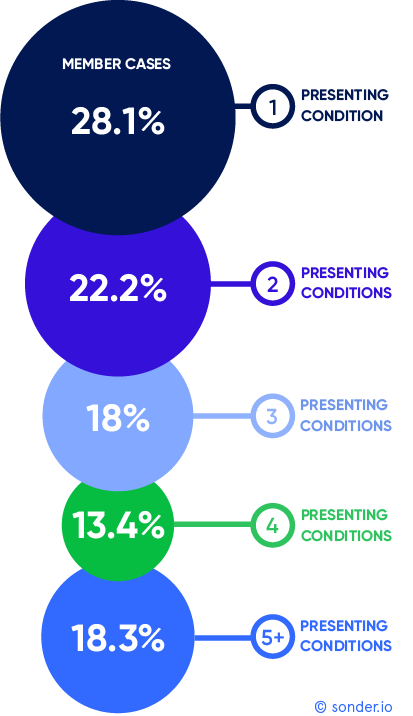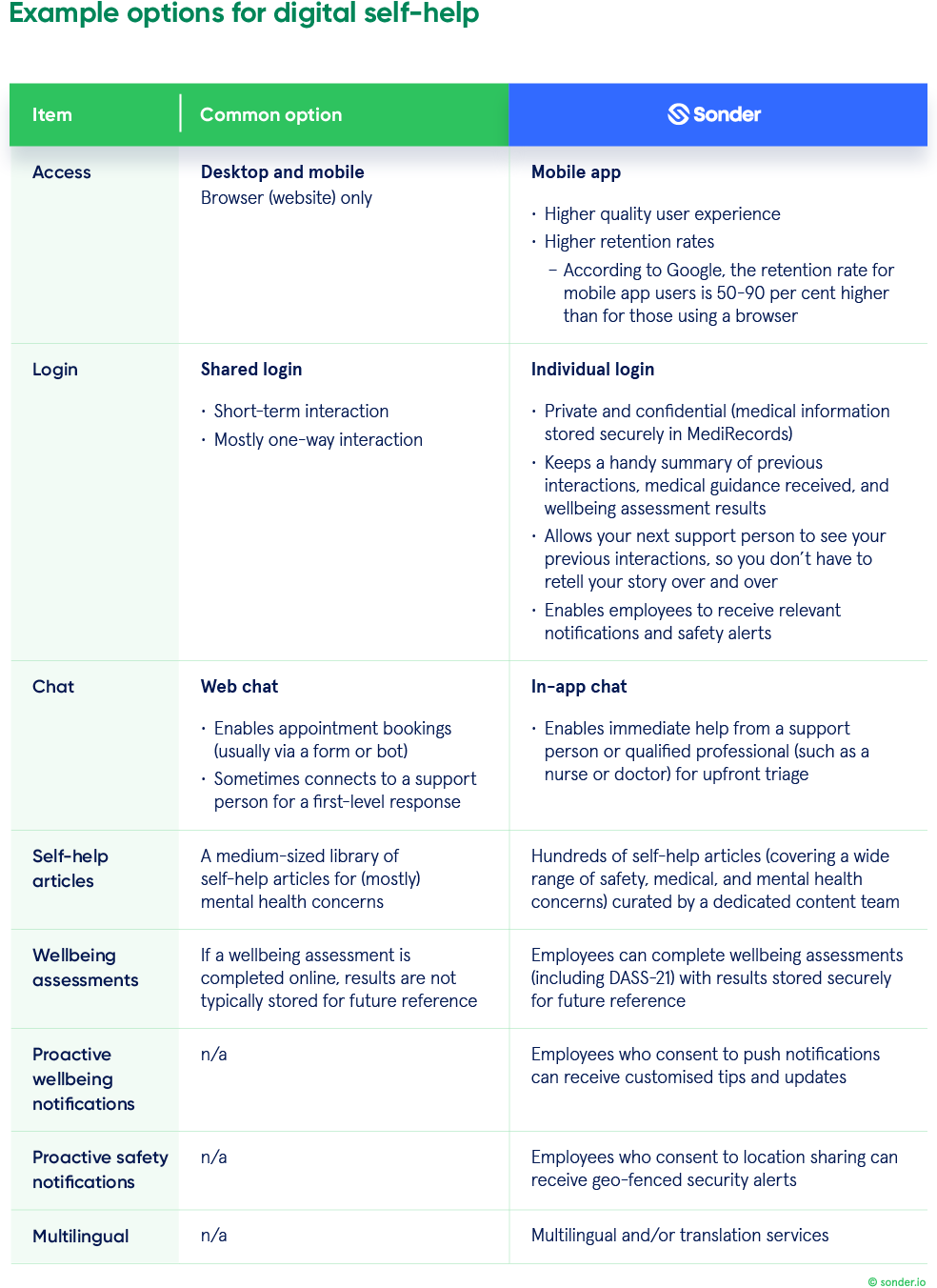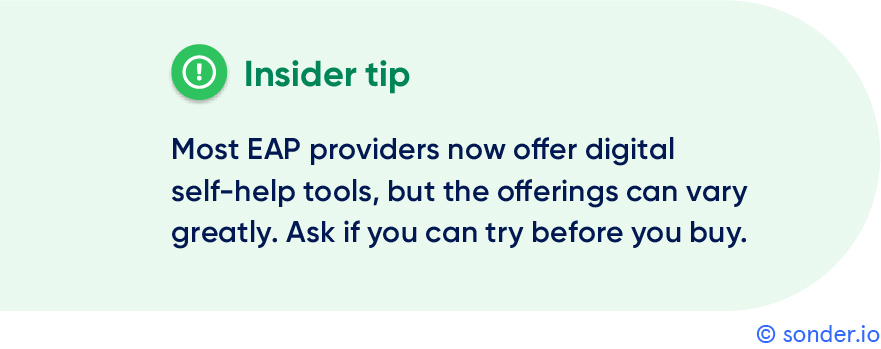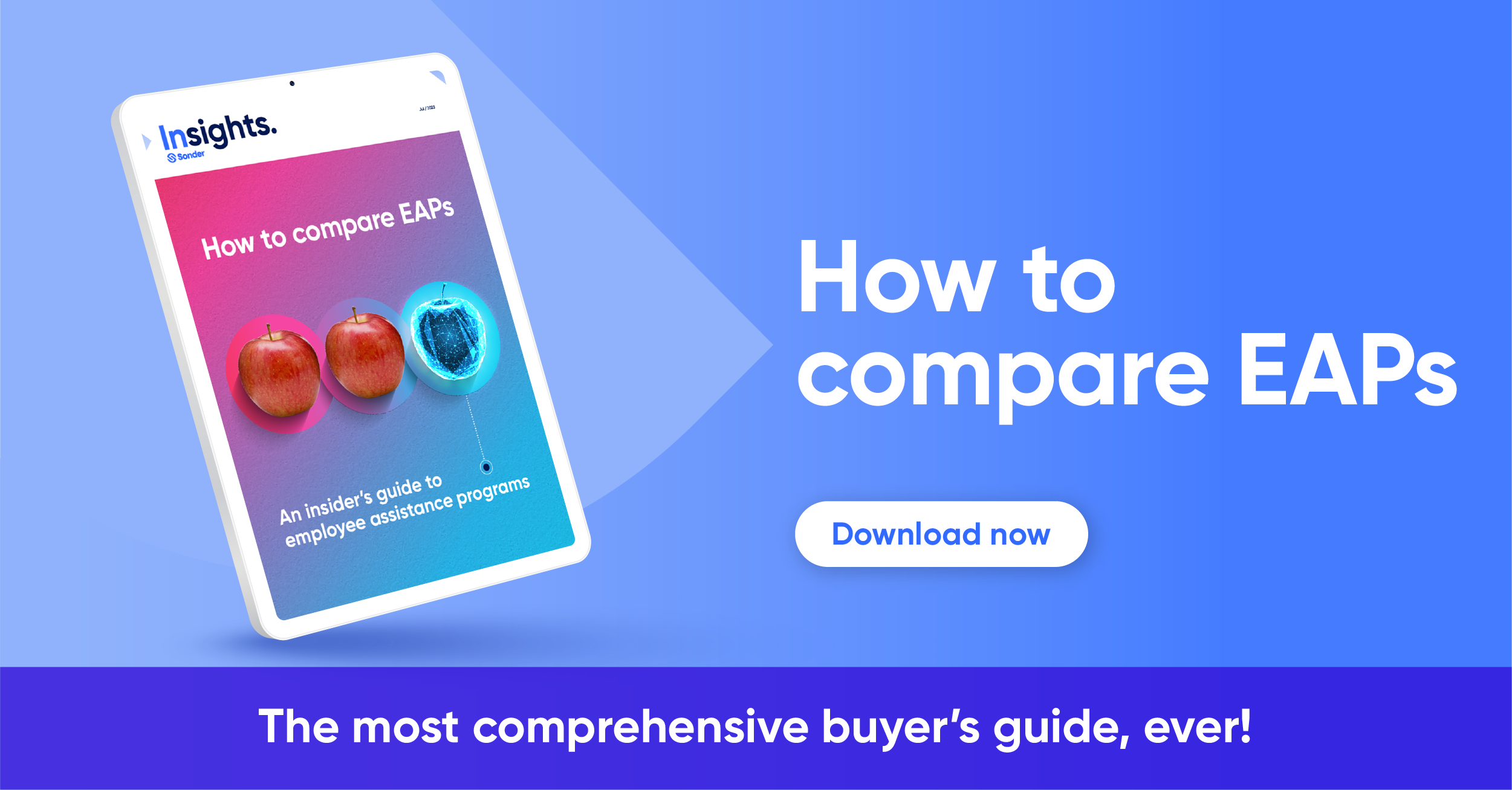Workplace employee assistance programs (EAPs) have long been a popular option for employee wellbeing support. However, their results can be disappointing, and in a catch-22, sometimes as few as one to five per cent of employees utilise their services. This can lead to delays in care, and increased costs related to lost productivity and workforce participation.
People leaders know this, which is why many have purchased add-on services and self-help apps to plug the gaps.
On the positive side, self-help apps can deliver low-cost, low-effort, easy wins.
On the negative side, self-help apps can, counterintuitively, increase risk and sometimes make help-seeking more complicated. For example:
- Digital self-help tools that replace EAPs (or EAP alternatives) can increase organisational risk by removing the expertise of human triage, support, and follow-up, as “experts fear vulnerable users could be harmed”. Self-help apps alone risk user drop-off and dangerous gaps in patient assessment.
- Digital self-help tools that supplement EAPs (or EAP alternatives) can add another layer to a complex support ecosystem that employees already find hard to navigate (unless they provide a single entry point for all of their wellbeing support services).
This blog post explains why self-help wellbeing apps need supplementary human support and gives an example of what to look for when choosing a digital self-help tool for your employees.
Less than 50% of frontline hospital doctors did not know how to access their own EAP.
Source: Internal Medicine Journal
Self-help wellbeing apps risk user drop-off
Self-help apps risk a loss of ongoing engagement unless they integrate seamlessly with human support and ongoing follow-up.
“Widely celebrated as the solution to the supply and demand imbalance in mental health care, digital mental health interventions have flooded the marketplace to supplement specialty mental health care. However, the evidence supporting their efficacy is mixed [see also here], and engagement with digital mental health interventions, particularly mobile apps that lack ancillary human interaction, is abysmal. Users are unlikely to use these interventions more than a few times,” conclude Rudd and Beidas.
Carlo, Ghomi, Renn and Areán concur; “the vast majority [of health apps] remain largely unevaluated… [and] even when apps are evidence-based, their public health impact is often curbed by poor adherence”.
Standalone digital interventions ignore decades of research about the importance of social support and may further isolate individuals who need humans the most.
Rudd and Beidas
Source: JMIR Mental Health
Self-help wellbeing apps risk gaps in patient assessment
Self-help apps usually lack professional healthcare oversight and clinical governance. Without supplementary support by real people, they risk gaps in patient assessment because:
- Fifty-one per cent of wellbeing support cases are caused by something other than a self-diagnosed issue; and
- Predefined self-help categories neglect that many wellbeing issues are complex and multilayered.
To illustrate this complexity, this visual shows a sample cohort of 10,000+ active member support cases here at Sonder. It shows that most employees needed support for more than one condition, and their support needs were often complicated by the fact that the impact was compounded for each challenge.

To summarise, we saw 28.1 per cent of employee support cases involved one presenting condition, 22.2 per cent involved two conditions, 18 per cent involved three conditions, 13.4 per cent involved four conditions, and 18.3 per cent involved five conditions.
Dr Jamie Phillips, MB ChB, AFCHSM, DIMC RCS(Edin), MRCGP(UK), FACRRM(EM), Medical Director at Sonder, comments:
“Complexity has a profound effect on health and social outcomes. Trying to solve clinical comorbidities across medical and mental health without addressing their underlying situational and systemic complexity will not work. It’s a band-aid approach when a holistic treatment plan is needed.”
How can you compare digital self-help options?
Here is a list of items you may like to consider for a digital wellbeing tool for your people:


How does Sonder combine a self-help app with human support?
Sonder is an EAP alternative. We combine mental health support with safety and medical support. We also combine on-demand technology with 24/7 human expertise.
Want to learn more?
For more information about how Sonder can help you rethink your employee and/or student support, we invite you to contact us here.

Download our deep-dive report
Today’s blog post shares excerpts from our new ‘How to compare EAPs’ guide, which we invite you to download here. This insider’s guide to employee assistance programs will help you:
- Define a typical EAP offering
- Summarise why employee uptake has been low
- Discover what makes EAP alternatives different
- Learn how to compare vendor offerings
- Gain insider tips and statistics
- Write a convincing business case
About Sonder
Sonder is a technology company that helps organisations improve the wellbeing of their people so they perform at their best. Our mobile app provides immediate, 24/7 support from a team of safety, medical, and mental health professionals – plus onsite help for time-sensitive scenarios. Accredited by the Australian Council on Healthcare Standards (ACHS), our platform gives leaders the insights they need to act on tomorrow’s wellbeing challenges today.



